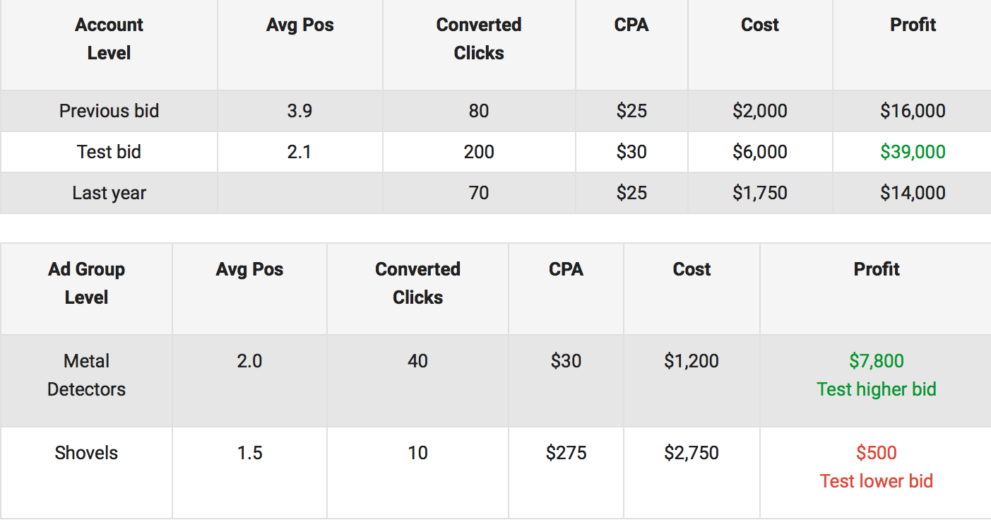We’re seeing a common theme develop over the last few months here at Hanapin. Clients are demanding more from us in terms of strategy and account growth. Furthermore, clients are citing our performance in these two areas as determining factors as to whether or not they’re happy with our services.
Many of our prospects as well are citing these very same reasons for moving on from their current agencies and consultants. Our prospects have also stated that they’re not terribly unhappy with the work their partners are doing. I’ve been consistently hearing statements from prospects such as “My agency isn’t bad, but I don’t think they can take me to the next level”. This tells me that as an industry, we’re focused too much on the tactical and not focusing enough on high-level strategy and being innovative enough when it comes to growing our client’s accounts.
We’re going to get into some concrete ways to demonstrate we’re thinking on a more strategic, growth-oriented level.
Taking A More Consultative Approach
Being more strategic with our clients means we need to be more consultative in our approach. We need to position ourselves as an industry that solves business problems through the use of PPC instead of taking a purely tactical approach in our conversations. How do we go about doing this? Some of the things I’ve done to take a more consultative approach with my clients are:
- Fully understanding my clients businesses, its key markets, opportunities, and obstacles to success. By leveraging that information, I’m able to create strategies that precisely target my clients’ customers needs and wants in unique ways that separate them from their competition.
- Taking a completely transparent approach towards my clients. It’s human nature to not want to discuss difficult topics such as poor performance or proactively asking for feedback that could be difficult to hear. Working in an environment of complete transparency leads to more in-depth discussions and better outcomes. Discussing difficult problems can create an opportunity for creative solutions and an overall improvement in performance (and a stronger client relationship).
- Storytelling. I take all the paid search performance data, competitor insights, and other insights collected through this channel and roll those learning’s into a compelling story that provides a glimpse into the overall state of my client’s business.
When I present information to my clients, I guard against making business decisions on their behalf. What I do however, is through the presentation of pay per click performance and other insight data, provide a series of recommendations our clients can implement to improve their businesses through the further allocation of spend towards PPC. I believe we strengthen our client relationships and retain them for longer periods of time when we’re perceived as trusted business advisers as opposed to being seen as ‘the lever pullers’.
Innovative Growth Initiatives
Clients are happiest when we’re finding innovative ways to grow their paid search programs. There are plenty of basic ways PPC marketers can grow accounts, such as uploading new keywords or combing the Google opportunities tab for ideas.
However, if we want to set ourselves apart and prove we’re seeking innovative ways to grow our clients’ businesses, we need to take a different approach. One way to do this is a bidding method Google calls ‘Profit Driven Bidding.’
Historically, I haven’t looked at bidding as a strategic way of improving overall performance. I’ve instead looked at bidding in more tactical terms of adjusting individual bids to meet specific cost efficiency targets.
Profit driven bidding is a completely different way to think about your bid strategy. Bidding to maximize total profit helps you find that in between spot between achieving volume and efficiency. Bidding solely to achieve a CPA or ROI target inherently restrains volume. On the other hand, using a bidding strategy that rigidly focuses on volume can lead directly to unprofitability. Balancing both of these competing metrics is important to business success. What CEO or CMO wouldn’t want both top and bottom line growth?
In order to run a successful profit-bidding test and then scale it out, you’ll need to do a few things beforehand:
- Develop a method that allows you to calculate profits from AdWords. In this calculation you’ll need to factor in everything that makes sense for your client’s business. Do they have repeat customers or offline sales that are driven by AdWords clicks? Using all these relevant factors gives a fuller understanding of your businesses’ revenue stream. Once this information is collected, factor out any gross margins and subtract your click costs to arrive at the profit number.

- If you’re on any sort of automated bidding, switch over to manual bidding and raise your bids 25%-30% to begin the test. According to Google, adjusting bids 25%-30% helps you measure the effects of your bid changes more clearly.
- Set a sufficient time frame to test. I understand this is a big change and CPCs/total cost will rise. That being said, testing for too short a period will not give you reliable results.
- Once the test is completed, it’s time to measure results. The key is to measure profit in aggregate vs. individual components of your account. While it might be necessary to lower bids in areas of the account that didn’t fare so well during the test, make sure you monitor performance for any fluctuations in profit. Those lower performing ad groups or campaigns might have provided the assisted conversions that made your overall test successful. Below is a sample Google provides that demonstrates the success of a profit bid test.

- Once you’ve tested and tuned your bids so profit is being consistently maximized, it’s time to put in bid automation. You can use automation to set the exact targets you need to continuously drive profit without manually adjusting bids.
Now that I’ve discussed benefits of the bidding for profit test, here are some items to consider.
- Accounts normally do not have profit spread equally throughout all their campaigns and ad groups. There will be areas of the account that are more profitable than others. A way to overcome this is to group your profit into what Google calls ‘portfolios.’ Grouping your accounts by profit amount can help you create a cohesive bid test.
- Bid testing at scale. Let’s face it – Google’s recommendation of testing at scale can be a scary proposition. What if the test doesn’t go as planned? That does create the risk of creating quite a bit of account disruption. All this being said I believe testing at scale will provide quicker results and will give you a deeper insight into whether your test is successful.
Testing too small will mean it takes longer for the test to complete and the subset of data will be too little for it to have sufficient impact on the overall business. This is something to keep in mind when planning your test. - Raising bids 25%-30% is a big jump, especially if you’re dealing with expensive clicks. If the jump is too steep for your specific business situation, Google recommends doing some research to determine what bid amount would cause a noticeable increase in traffic volume.
In short, for the test to work, you’ll need to increase your bids in order to drive more volume and ultimately profitability, but it has to fit with specific business needs and your comfort level with this level of aggressiveness.
For more information on Google’s profit bidding formula, click here.
Conclusion
I’ve been in paid search for a long time now and remember a time when the bar for client satisfaction was pretty low. All we had to do was show our tactical proficiency and everyone was happy. Now that paid search has evolved and more organizations are depending on it to drive a significant amount of business, we have to be more strategy and growth oriented. This is a significant, yet expected change.
As the industry matures and clients invest ever-increasing amounts of budget into PPC, the more it’s on us as professionals to provide guidance for our clients so they can make smart investments in paid search and achieve significant growth. Providing our clients sound business advice through the use of PPC and constantly finding opportunities for growth can go a long way towards retaining our clients for years to come.



